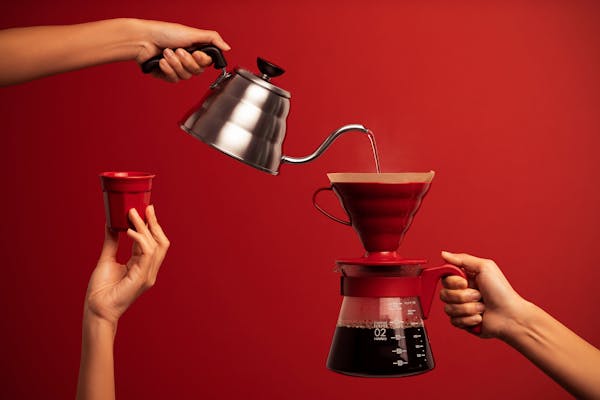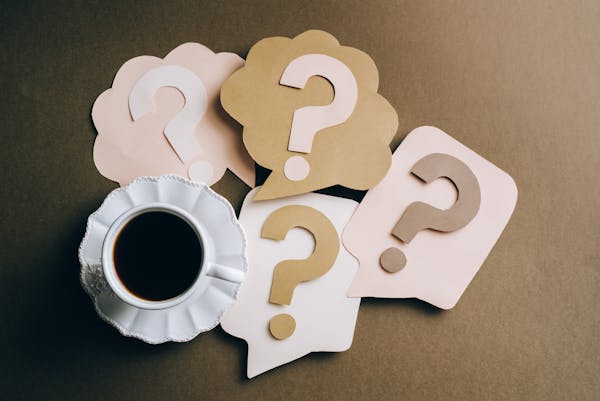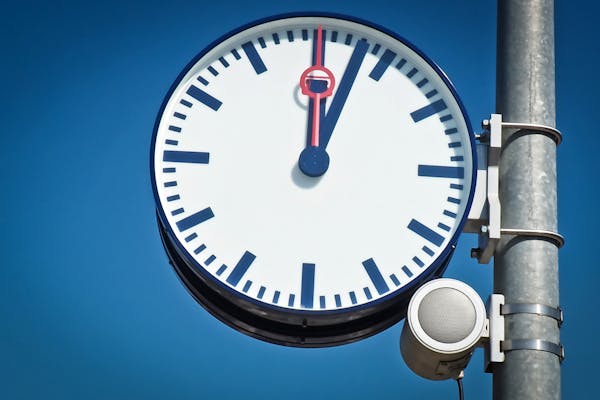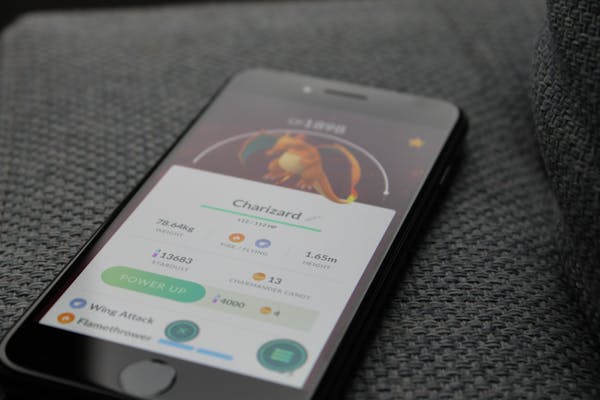Every company's dream is to have a website that loads quickly, looks great, generates a lot of sales, and provides overall customer satisfaction. Here is a list of characteristics that your e-commerce website must have in order to 'click' with customers.
Easy to Use Navigation
 "Let me look for it - where can I find it - why can't I find it - never mind, I'll look for it on another site." Would you like to prevent the dreaded "customer bounce"? Create an easy-to-navigate customer journey where they can move between product categories and website sections to complete the desired journeys. A simple burger menu, a well-designed header, clear and effective CTA buttons, and a comprehensive footer with the site map keep the customer on your website.
"Let me look for it - where can I find it - why can't I find it - never mind, I'll look for it on another site." Would you like to prevent the dreaded "customer bounce"? Create an easy-to-navigate customer journey where they can move between product categories and website sections to complete the desired journeys. A simple burger menu, a well-designed header, clear and effective CTA buttons, and a comprehensive footer with the site map keep the customer on your website.
Design for Mobile Devices
 The ability of your website to provide a seamless experience across screens of all sizes is an obvious yet very crucial feature. Today's consumers are constantly switching between devices, so it's critical that the surfing experience be consistent across all of them, especially mobile. Choose from Shopify's choice of responsive themes to make things easy for yourself.
The ability of your website to provide a seamless experience across screens of all sizes is an obvious yet very crucial feature. Today's consumers are constantly switching between devices, so it's critical that the surfing experience be consistent across all of them, especially mobile. Choose from Shopify's choice of responsive themes to make things easy for yourself.
High-Quality Photographs and Videos
 Product images and videos are one of, if not the, most crucial components of your website. High-quality photos that highlight all product features not only assist your customers in making an informed decision, but also help to reduce returns. Make sure your photos are well-lit, appropriately styled, and intricately detailed to assist customers in making color, variant, or size selections.
Product images and videos are one of, if not the, most crucial components of your website. High-quality photos that highlight all product features not only assist your customers in making an informed decision, but also help to reduce returns. Make sure your photos are well-lit, appropriately styled, and intricately detailed to assist customers in making color, variant, or size selections.
Options for Sorting and Filtering
 A phone with 8GB RAM, a 6.5-inch screen, a 4000 mAh battery, and a 32MP camera for less than INR 15,000 that can be delivered in two days - customer searches may be pretty specific. The key is to provide the customer with a neatly organised sorting and filtering list that ensures they spend their time making a purchase decision rather than discovering products. Filters should be categorised under relevant facets that customers may want to filter your products by, with the most important ones at the top. Here are some examples to get you started on your own list.
A phone with 8GB RAM, a 6.5-inch screen, a 4000 mAh battery, and a 32MP camera for less than INR 15,000 that can be delivered in two days - customer searches may be pretty specific. The key is to provide the customer with a neatly organised sorting and filtering list that ensures they spend their time making a purchase decision rather than discovering products. Filters should be categorised under relevant facets that customers may want to filter your products by, with the most important ones at the top. Here are some examples to get you started on your own list.
Display of Reviews and Ratings

Customers rely heavily on reviews and ratings from other customers to validate the information shared by brands and to help them make purchase decisions because they are unable to touch and feel products when purchasing them online. This leaves brands with two important tasks: first, enabling and encouraging customers to rate their products and services, and second, strategically displaying these reviews and ratings on the website. Judge.me and Loox are two apps that can help you do just that. The complete list can be found here.
Section Frequently Asked Questions
 To create a comprehensive purchase experience and keep customers from leaving the website in search of answers, brands must create an easy-to-find and even easier-to-navigate FAQ section. This can be used to provide critical information as well as to answer the most frequently asked questions about their products or services by potential customers. Here’s an in-depth read on the why, when, and where of FAQs along with FAQ templates to help you build your own.
To create a comprehensive purchase experience and keep customers from leaving the website in search of answers, brands must create an easy-to-find and even easier-to-navigate FAQ section. This can be used to provide critical information as well as to answer the most frequently asked questions about their products or services by potential customers. Here’s an in-depth read on the why, when, and where of FAQs along with FAQ templates to help you build your own.
Information about Exchange and Return
 A clear disclosure of your exchange and return policy is a simple approach to lead the buyer away from any pre-purchase uncertainties. This alleviates the client's concerns about their purchase and allows firms to introduce things that the customer might otherwise be hesitant to test. Along with developing a generous policy that boosts purchasing confidence without draining your bank account, it is also critical to ensure that your exchange and return policies are clearly accessible on your website. They may be put to the website's header or footer, the FAQ section, the product catalogue page itself, and even the cart and checkout pages.
A clear disclosure of your exchange and return policy is a simple approach to lead the buyer away from any pre-purchase uncertainties. This alleviates the client's concerns about their purchase and allows firms to introduce things that the customer might otherwise be hesitant to test. Along with developing a generous policy that boosts purchasing confidence without draining your bank account, it is also critical to ensure that your exchange and return policies are clearly accessible on your website. They may be put to the website's header or footer, the FAQ section, the product catalogue page itself, and even the cart and checkout pages.
Notifications through Web Push
 We've all seen those amusing alerts from food and grocery delivery apps; however, notifications aren't limited to mobile applications. Websites may also employ push notifications to raise awareness about new goods, remind customers about abandoned carts, give delivery details, and so on. Web push notifications are a simple feature that may provide organisations with a plethora of chances for client connection and engagement. There are other amazing tools, such as PushOwl and Web Push & Announcement Bar, that integrate with Shopify in less than 5 minutes and may help you get started right away. See the full list of web push notification applications here.
We've all seen those amusing alerts from food and grocery delivery apps; however, notifications aren't limited to mobile applications. Websites may also employ push notifications to raise awareness about new goods, remind customers about abandoned carts, give delivery details, and so on. Web push notifications are a simple feature that may provide organisations with a plethora of chances for client connection and engagement. There are other amazing tools, such as PushOwl and Web Push & Announcement Bar, that integrate with Shopify in less than 5 minutes and may help you get started right away. See the full list of web push notification applications here.
Various Payment Options
 With the escalating expenses of client acquisition, it appears that missing a transaction because a consumer forgot a CVV or because one bank's computer was down is a commercial crime. According to an Axtrics report, having many popular payment choices on your website may assist improve sales by up to 71%. Do you want to know how many payment methods Shopify accepts and how to set them up on your website? With this quick 6-minute read, we've got you covered.
With the escalating expenses of client acquisition, it appears that missing a transaction because a consumer forgot a CVV or because one bank's computer was down is a commercial crime. According to an Axtrics report, having many popular payment choices on your website may assist improve sales by up to 71%. Do you want to know how many payment methods Shopify accepts and how to set them up on your website? With this quick 6-minute read, we've got you covered.
24/7 Customer Support
 Brands can continue to build closer relationships with customers by making themselves available at all times, for all types of interactions, and by providing all necessary information. With developments in AI technology and the fast development of e-commerce chatbots, marketers can ensure that consumer dialogues are addressed at all times, across all locations and time zones, and at a fraction of the cost of human agents. This guarantees that the brand remains with the client throughout the purchasing experience, resolving problems and reaping higher returns on acquisition expenditures.
Brands can continue to build closer relationships with customers by making themselves available at all times, for all types of interactions, and by providing all necessary information. With developments in AI technology and the fast development of e-commerce chatbots, marketers can ensure that consumer dialogues are addressed at all times, across all locations and time zones, and at a fraction of the cost of human agents. This guarantees that the brand remains with the client throughout the purchasing experience, resolving problems and reaping higher returns on acquisition expenditures.
These ten elements will assist you in creating an ecommerce website that attracts, engages, converts, and retains consumers.


Comments